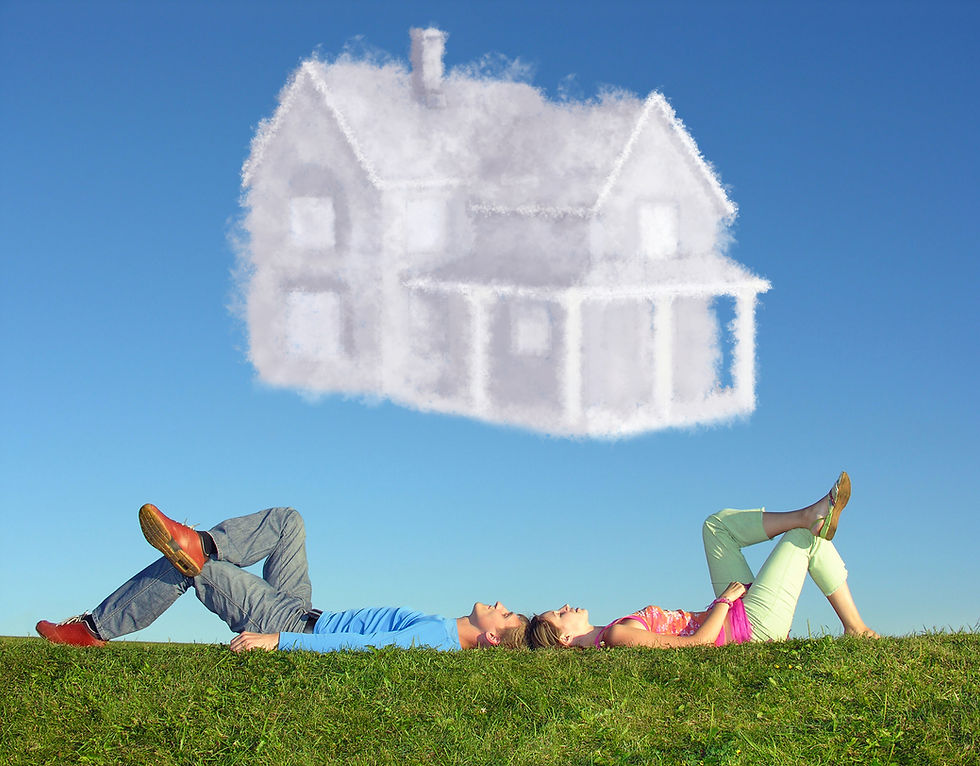8 Ways the Post-Pandemic Home Will Change
- Marni Jameson

- Feb 1, 2021
- 4 min read

For anyone aspiring to have a lovely home, especially during the pandemic, let me warn you about the two words that will foil your plans every time: For now.
Over the past year, I have been hearing those two words too often. Heck, I’ve been saying them myself. Tell me if this sounds familiar:
For now, the kitchen table will just have to look like a lawyer’s office after a tornado, until we can go back to our real offices.
For now, we’ll have to put up with the 60 boxes of microwave popcornand eight crates of toilet paper on the pantry floor, until we can stop hoarding as if planning for Armageddon.
For now, just until the pandemic is over, Grandma will have to sleep in the room with the baby and the NordicTrack.
And next thing you know, for nowbecomes for always. That is no way to go through life.
If this pandemic hasn’t caused you to reckon with the finiteness of life, you might already be dead. Here’s reality: Now is all we have, so make now beautiful.
Happily, as I look at current home trends, I see that many of you already are making the most of now. And the changes you’re making are defining homes of the future.
See, a year ago, almost no one saw coming a plague that would lock us in and shut the world out. The last pandemic was over 100 years ago, and no one alive can remember. Although the coronavirus took us by surprise, we adapted on the fly, making swift, radical changes to our homes and lifestyles.
Now, we not only know this can happen, but we also know it could happen again. Next time we’ll be ready. Getting caught off guard once is understandable; getting caught off guard twice is stupid.
So I took out my crystal ball to see how, when the pandemic ends ― and I pray that is soon ― our homes will forever change. Here are eight pandemic-inspired home trends fixing to stay:
1. We’ll seek less life in the big city. As urban density and mass transportation have become a health risk, making people who live in big cities feel trapped and unsafe, demographic studies show more are moving to less dense areas, where they can get more room for more activities and potentially more relatives. They are also choosing warmer climates, so are migrating south and west, where they can spend more time outdoors.
2. We’ll want more house– The pandemic has spotlighted the importance of a having an elastic home, one that can stretch to accommodate kids home from college, adult children suddenly out of work, and elderly parents eluding nursing homes. Homes also need to stretch to become our office, school, gym, theater and 24-hour restaurant.
3. Working from home will become the norm.Now that companies have discovered their employees really can work from home without playing solitaire all day on their computers, many are reevaluating their need for commercial office space. Meanwhile, those working at home (happily ditching their neckties, suits, high heels, dry-cleaning bills and time-sucking commutes) are carving out clever ways to make their home office be more than a temporary shelf in the closet. They are designing attractive, productive zoom-worthy workspaces that are not just for now, but for years to come.
4. We’ll reclaim the outdoors. Because the best cure for cabin fever and the safest place to socially distance with friends is the great outdoors, our yards will become the new frontier for home improvement. Whether a backyard, front porch, balcony or rooftop, outdoor spaces will transform into extra furnished rooms, featuring firepits, kitchens and living areas.
5. We’ll find prettier storage solutions:One challenge of working or attending school from home is trying to make it look like you don’t. When your home also becomes an office or classroom, more stuff comes in the door overwhelming whatever storage you once had. The importance of attractive storage will swell, as people seek to cleverly conceal more stuff.
6. We’ll close the door on open floor plans.A popular trend in residential design for years, open floor plans often backfire, especially during a pandemic when what those living together crave most is a wall and door. Going forward we’ll see more defined spaces that are versatile and offer functional privacy.
7. We’ll move from green to clean. While the last 10 years have been about living green, the next 10 will be about living clean. Now that we have all become germaphobes, wearing masks like bandits and washing our hands like Lady Macbeth, get ready to see more touchless light switches, sinks and toilets in homes, as well as keyless entries, voice-activated appliances, such as televisions and coffee makers, motion-controlled doors, and built-in HEPA (high-efficiency particulate air) filters. We will also seek out finishes based on their cleanability, (ruling out porous surfaces), and a new generation of antimicrobial cleaning products proven to kill as well as repel harmful bacteria and viruses.
8. We’ll ramp up our home improvements. Now that we know when the world closes in, home becomes our everything, we willinvest even more in making home better. Because we’re home, we will actually get to all the improvements we’ve put off. We’ll paint that room, and update that bath. And we’ll improve with an eye toward making homes serve more people and more purposes for now and for always.
If you’ve modified your home as a result of the pandemic, I’d like to hear from you. Please send me an email meabout what you did and why.
Photo Caption: Making Home Work—Dedicated home office space and outdoor living areas, as shown in this home by architect Phil Kean, are two pandemic-driven trends that will define homes long after the pandemic is over. Uneek Image/courtesy Phil Kean Design Group.




Comments